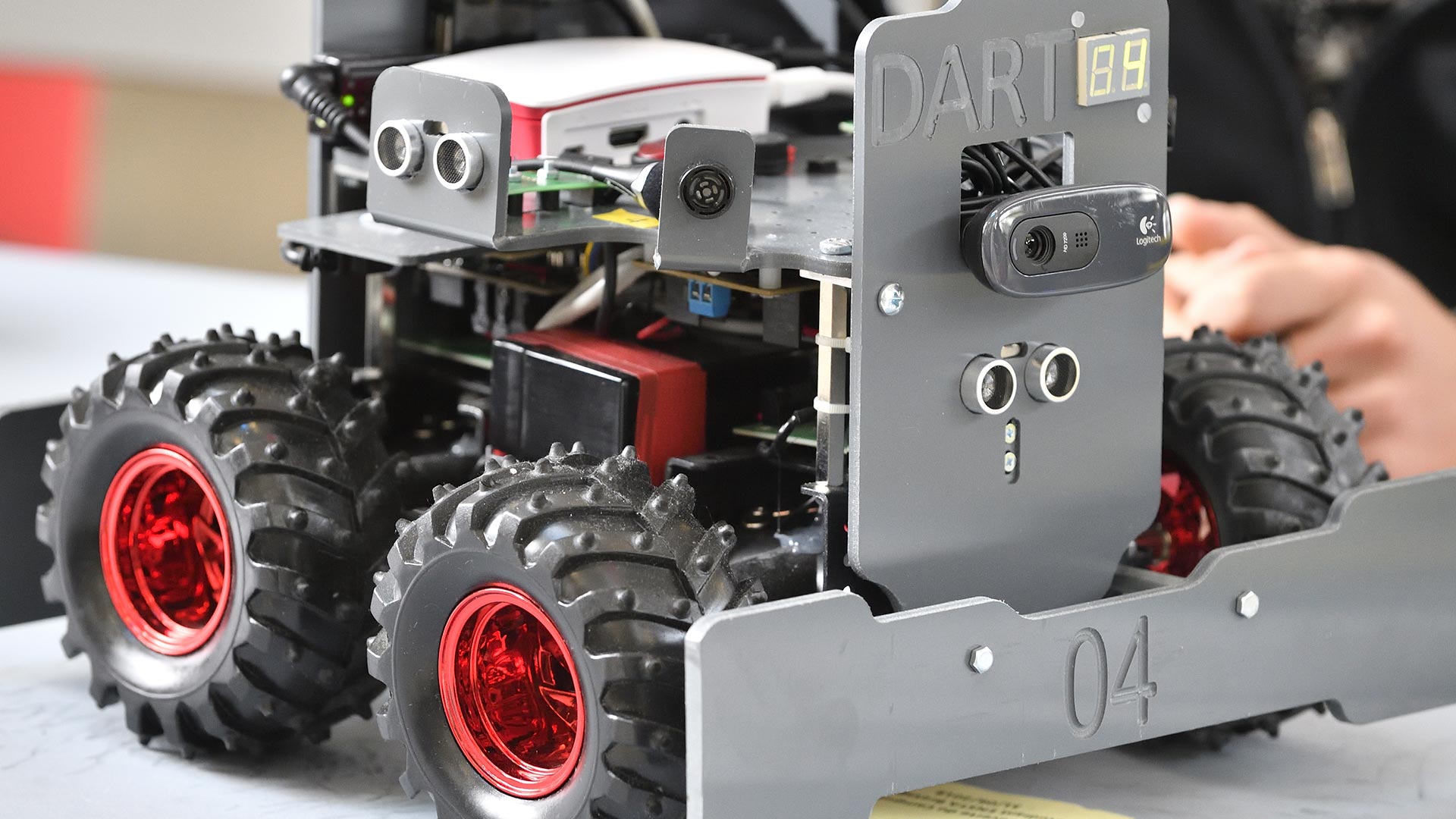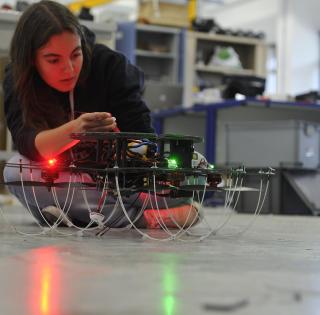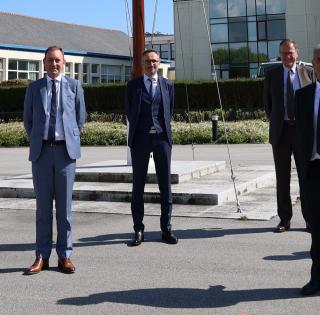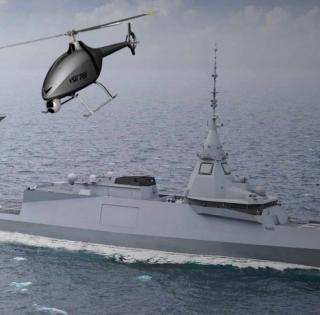
ENSTA Bretagne’s specialization in embedded systems trains you in developing and enhancing these complex electronic architectures combining software, electronic hardware, specialist algorithms and telecommunications.
- embedded systems
- digital electronics
- C / C++
- software engineering
- FPGA
- signal and image processing
- machine learning, AI
Cell phones, cars, ships, planes, rockets, robots…there are embedded systems hidden in the most common and complex products. They have to contend with key considerations (bearing on autonomy, weight, robustness and security for example) and are becoming ever more complex.
The first two years are spent learning a knowledge set in Information and Communication Science and Technology (mathematics, automation, signal, computer science, analog and digital electronics).
In the final year, teaching will be geared towards helping students to grasp the programming methods for real-time embedded systems and high-performance computing, design of artificial intelligence and the mechanisms of software-defined radio and networks of sensors.
Graduates will be able to find work in a range of sectors where these embedded systems are driving innovation: the defense industry, medicine, shipbuilding, aeronautics, automobile industry and energy.
Exemples de missions d'alternance en entreprise ou dans les centres d'essais publics
- Etude et développement de systèmes robotisés pour équipements marins et sous-marins
- Etude et conception de la chaine de traitement de signaux radar.
- Développement et mise en œuvre de systèmes de suivi de navigation pour lanceur balistique et contrôle de mission
- Ingénierie système pour l'architecture informatique des systèmes de management de plateformes navales de nouvelle génération
- Etude et développement de capteurs acoustiques pour l'observation sous-marine
- Etude de systèmes appliqués aux outils de communications tactiques
- Conception et réalisation de logiciels et systèmes de commandes pour la mesure de signature électromagnétique.
- Etude et mise au point d'automates de test pour le transport ferroviaire
- Etudes et développement de systèmes, et évaluation de l'apport de l'IA, appliqués à la sécurisation d'essais de véhicules terrestres
- Intégration et test/qualification de produits de radiocommunication.
- Étude et expérimentation de simulation virtuelle en combat terrestre
- Intégration et évaluation de prototypes d’accéléromètres embarqués sur aéronef
- Ingénieur Vérification et Validation pour un système de guerre électronique
- Conception d'architecture logicielle embarquée dans les équipements électroniques embarqués dans les systèmes de production et de gestion d'énergies
- Etudes en laboratoire, appliquées à la sécurité des technologies de l'Information embarquée
- Etude et développement d’outils de monitoring de systèmes électroniques sur la base de technologie Web, Android et linux embarqués
- Etude et développement d'applications et conception d'architectures logicielles appliquées à des outils de vidéos numériques temps réel
► + d'infos : Samedi 16 décembre 2023, ENSTA Bretagne proposait un webinaire dédié à ses formations d'ingénieur par alternance. Visionner le replay.
Que deviennent les diplômés en Systèmes Embarqués ? |
La formation
Les deux premières années permettent d'intégrer un ensemble de connaissance en Sciences et Technologies de l'Information et de la Communication (électronique numérique et analogique, informatique, signal, automatique, mathématiques).
En dernière année, les enseignements permettent d'appréhender les méthodes de programmation pour l'embarqué temps réel et le calcul intensif, la conception d'une intelligence artificielle et les mécanismes de la radio-logicielle et des réseaux de capteurs.
A pioneering engineering school for co-operative courses in embedded systems.
For 50 years, ENSTA Bretagne has been training high-level engineers in the field of embedded systems. It has innovated by offering co-operative courses since 2006: ENSTA Bretagne is now recruiting its 18th "Embedded Systems" engineers class.
Our graduates are all employed, recognized in industry and some have even become in-company trainers for our students.
The engineering course in the field of embedded systems is an engineering degree accredited by the CTI and specialized in the design and development of complex electronic architectures that combine software, electronic hardware and business algorithms.
Embedded systems are central to complex system interactions: detecting, deciding and taking action are the main tasks of an embedded system. Their design requires general knowledge of electronic and computer system modeling.
- ENSTA Bretagne has a long tradition of courses in these fields (sensor chains, control systems, electronic engineering and software engineering) and has been involved for several years in the development of autonomous robotics, Artificial Intelligence and cyber security: all disciplines involved in the development of embedded systems, as a strategic and rapidly changing engineering field.
The course in embedded systems leads to a new level of perspective: the scientific methods and technologies covered during the course apply to all industrial fields, whether civil or defense. The school is also fortunate to have many professionals, who are engineers in these fields, who are involved in teaching. This gives our graduates the ability to work in a wide range of industries. These include the following areas:
- electronics,
- computer technology,
- aeronautics and space,
- naval,
- mobility and transport (automotive, rail and public transport management and control),
- telecommunications,
- energy,
- agriculture,
- sustainable development.
De nombreuses entreprises et secteurs d'activité recherchent ces compétences. Les propositions de contrat d'apprentissage dans le domaine des systèmes embarqués couvrent des sujets et prennent des dénominations variés. Voici quelques exemples :
- apprenti·e ingénieur·e "spécifications techniques et fonctionnelles de systèmes embarqués"
- apprenti·e ingénieur·e "moyens de test"
- apprenti·e ingénieur·e "spécialiste instrumentation embarquée"
- apprenti·e ingénieur·e "automatisme/supervision/informatique/électricité"
- apprenti·e ingénieur·e "vérification et validation fonctionnelle de systèmes complexes"
- apprenti·e ingénieur·e "système et logiciel"
- apprenti·e ingénieur·e "systèmes électroniques innovants"
- apprenti·e ingénieur·e "électronique et logiciel embarqué"
- apprenti·e ingénieur·e "architecture système"
ENSTA Bretagne is a school in the Brittany network of high digital technologies and a member of many expert networks such as IRT Bcom (a research and technology institute for digital innovation), the cyber excellence cluster (a reference cluster for France based in Brittany), CominLabs (a laboratory of excellence in information and communication sciences), the Groupement Bretagne Télédétection (a scientific consortium for space technologies and applications) and the competitiveness clusters for the maritime sector (the Brittany Atlantic Sea cluster), the automotive industry (ID4MOBILITY), Images and networks, the industry of the future (EMC2), the aerospace sector (Aerospace valley) and many scientific and technological networks for the defense sector.
The performance of embedded systems is increasing with the appearance of new computer languages and new programming methods, and the development of new electronic components, to provide ever more services, data, reliability, security and adaptability. ENSTA Bretagne's research teams (Lab-STICC laboratory) are involved in these major scientific and technological advances.
The design of weapons systems and that of electronic warfare systems are also a long-established areas of excellence for the school, which is supervised by the French defense procurement agency, Direction Générale de l’Armement, i.e. the department that decides on the systems to be developed for the armed forces of tomorrow.
ENSTA Bretagne is the reference school for training engineers (civil and military) for the French Ministry of the Armed Forces, for many companies in the field and for the French defense innovation agency (AID). These organizations are the largest investors in France in new technologies and are involved in the innovation dynamics of many companies.
► Vous n'avez pas pu assister au webinaire de présentation des formations d'ingénieurs par alternance ni participer à nos portes ouvertes ? Visionnez le replay du webinaire disponible sur YouTube.
L'exemple du projet DREAM
Mené par deux apprentis-ingénieurs en systèmes embarqués et un apprenti-ingénieur en conception mécanique, l'objectif du projet DREAM réalisé au cours de l'année 2024 était de concevoir un drone capable de stabiliser son vol y compris en phase d'impesanteur. Le projet retenu par le CNES dans le cadre du programme Parabole, a permis aux étudiants de tester leur drone lors de vols paraboliques au sein de l'avion 0G.
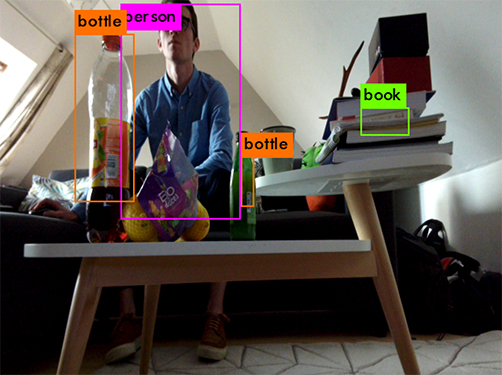
Spotlight on the Deepdart project
The Deepdart project was created by Théo Lagrue and Tony Calvez, two co-operative (apprentice) engineers specializing in "embedded systems".
For several weeks, they worked on artificial intelligence for robot recognition.
Their project included different phases:
- Learning: 12,000 images were acquired for the database, the numerous calculations being accomplished by a super-computer.
- Execution: the execution algorithm enables the images to be analyzed (each image being divided into different segments which are analyzed and compared to the data acquired in the previous phase).
- Detection: when several parts of the image are recognized, an algorithm standardizes the different zones to detect the complete object.
This project was a real experiment in the field of intelligence and embedded systems. It was a challenge to accomplish so many calculations on Nintendo Switch architecture and the result was way above our expectations.
Claire’s testimony, Scrum Master, 2015 co-operative engineer graduate, specializing in embedded systems.
Examples of final year projects accomplished (6 month mission in company)
- application in the automobile sector : "Development of electromagnetically compatible, risk analysis and design rule definition assistance tools" for PSA Group,
- application in robotics : "Study and optimization of robotic systems to localize and identify underwater mines" for DGA Techniques Navales,
- application in the naval sector : "Study of the operation reliability and safety progress path for a submarine program" for Naval Group






